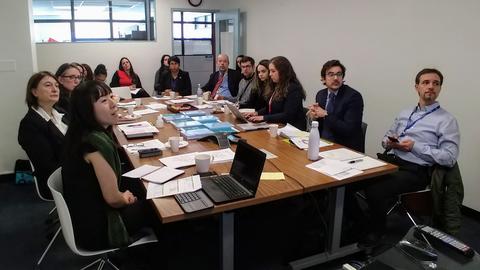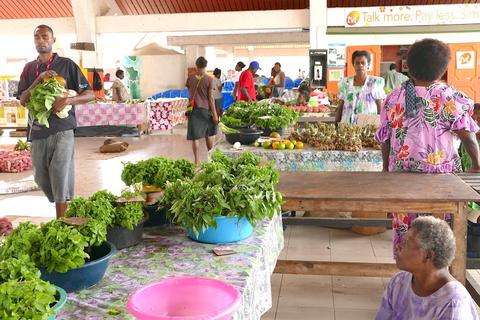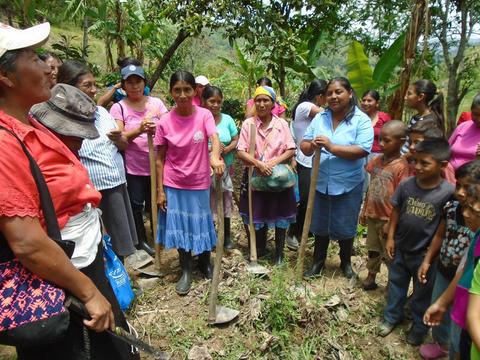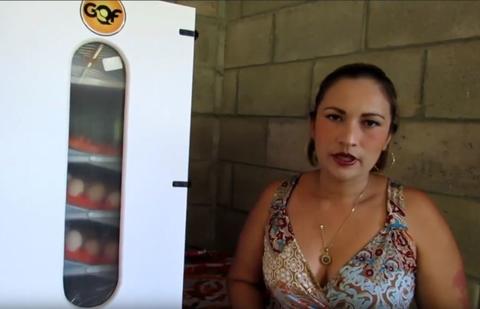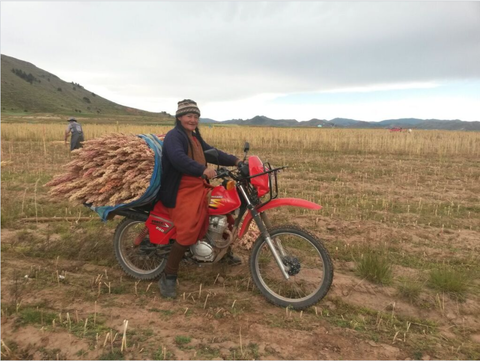March 24, 2017
With a nursery garden, youth recover water and plant seeds of peace in Cauca, Colombia
September 2015. Two important moments can occur in two very distant places: the first, the United Nations Headquarters in New York City; the second, in the sub-district of El Rosal, in Cauca, in the heart of the Colombian Massif and one of the greatest natural heritage sites in Colombia, a zone which has been heavily affected by the armed conflict.
While leaders of 193 countries at the United Nations approved the 2030 Agenda for Sustainable Development and the 17 Sustainable Development Goals, a different story was unfolding in El Rosal. This community was facing one of its worst fires in decades as thousands of hectares of land were burned to the ground. The fire placed a considerable burden on this already struggling community as a majority of the residents had relied on the land for farming and a broad range of crop production. More importantly, the region was already prone to high rates of unemployment and hardship after years of conflict, which was compounded by the loss of land and water access due to the fire.
Most remarkably, the tragedy did not define the residents who instead found themselves joining forces and working together to safeguard their rural community. With support from the Sustainable Development Goals Fund, youth from the community through a SDG Fund programme, joined local efforts to recover water and to protect the environment. Ultimately in an initiative that would strengthen the fabric of this struggling community by supporting not only water resources but by working to build peace in the region.
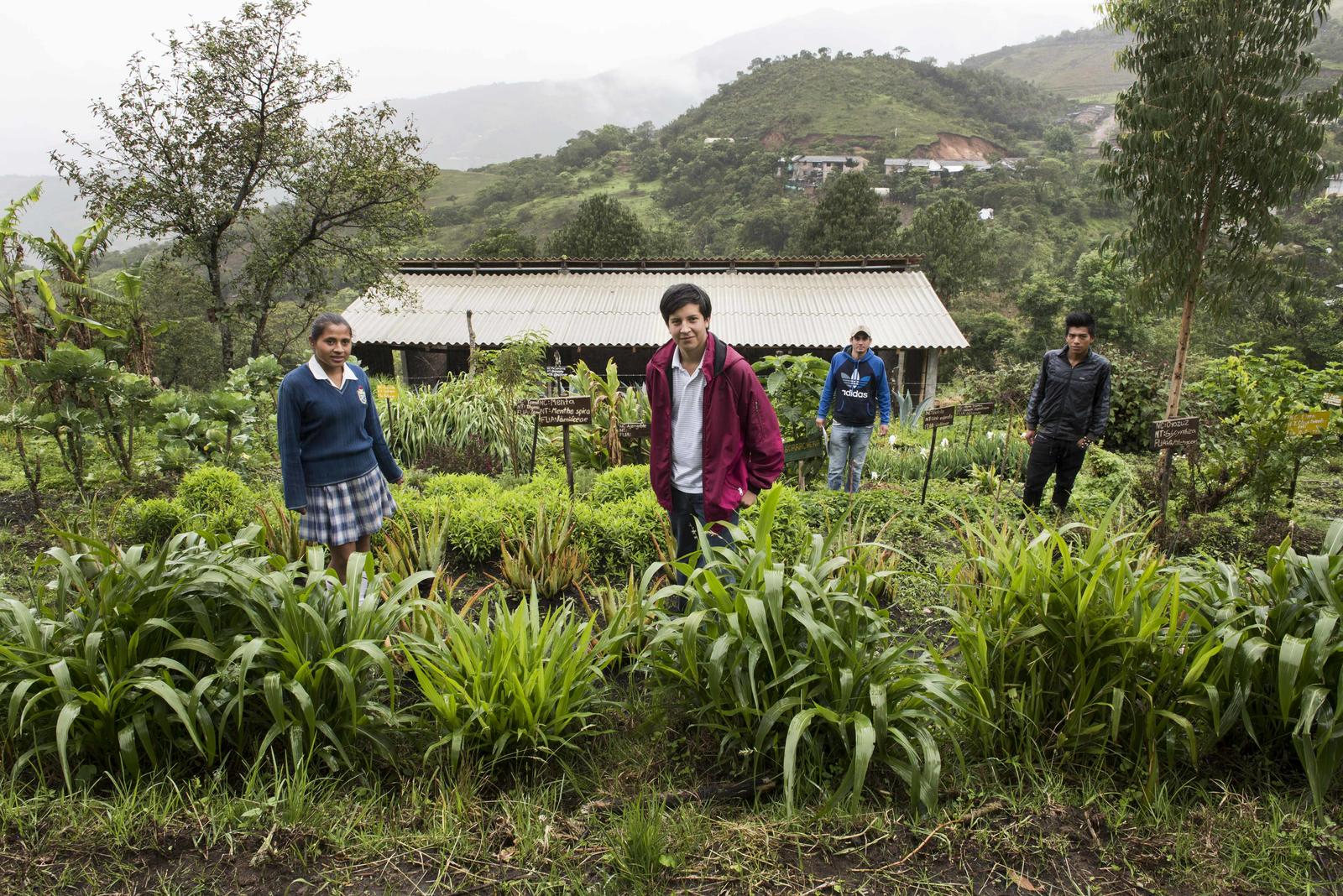
El Rosal, Colombia. Martha Timana Imbachi, Oscar Fernando Hoyos Carvajal, Luis David Lopez and Yecid Alcibar Cordoba at the nursery now utilized for the restoration of water sources and peaceful activities. The nursery has worked to generate greater community involvement and foster local commitments towards protecting the environment. © SDG Fund / Freya Morales
In the community of El Rosal, people often discuss the “incendio de septiembre” (September Fires in Spanish), which were caused by heavy droughts in the region and perpetuated by the atmospheric phenomenon, “El Nino”. Hundreds of families lost their subsistence crops as whole forests burned down with local wildlife and fauna also severely impacted. But perhaps, the biggest loss for the community was the destruction of all of the key water sources in the regions, namely the Canguis y Ovejeras, which the community heavily relied upon.
Change begins with 50,000 trees
In the midst of this overwhelming situation and aftermath of the fire, a group of young students and teachers from the Educational Institution of Nuestra Señora del Rosario (Our Lady of the Rosary), in Cauca came together to identify a unique opportunity. With a good understanding of local horticulture and agriculture practices and the flourishing institution’s nursery they could work to help speed up the natural recovery of the affected region by using indigenous plants as a natural catalyst.
The young students and teachers, working alongside several UN Agencies, local and national government partnesr collaborated on a joint programme of the SDG Fund. The community came together and presented their plan designed to make the institution’s nursery a central agent for education and positive change. At the same time providing the tools and resources to aid in the recovery and the sustainable use of water and natural resources in the region known as the Colombian Massif.
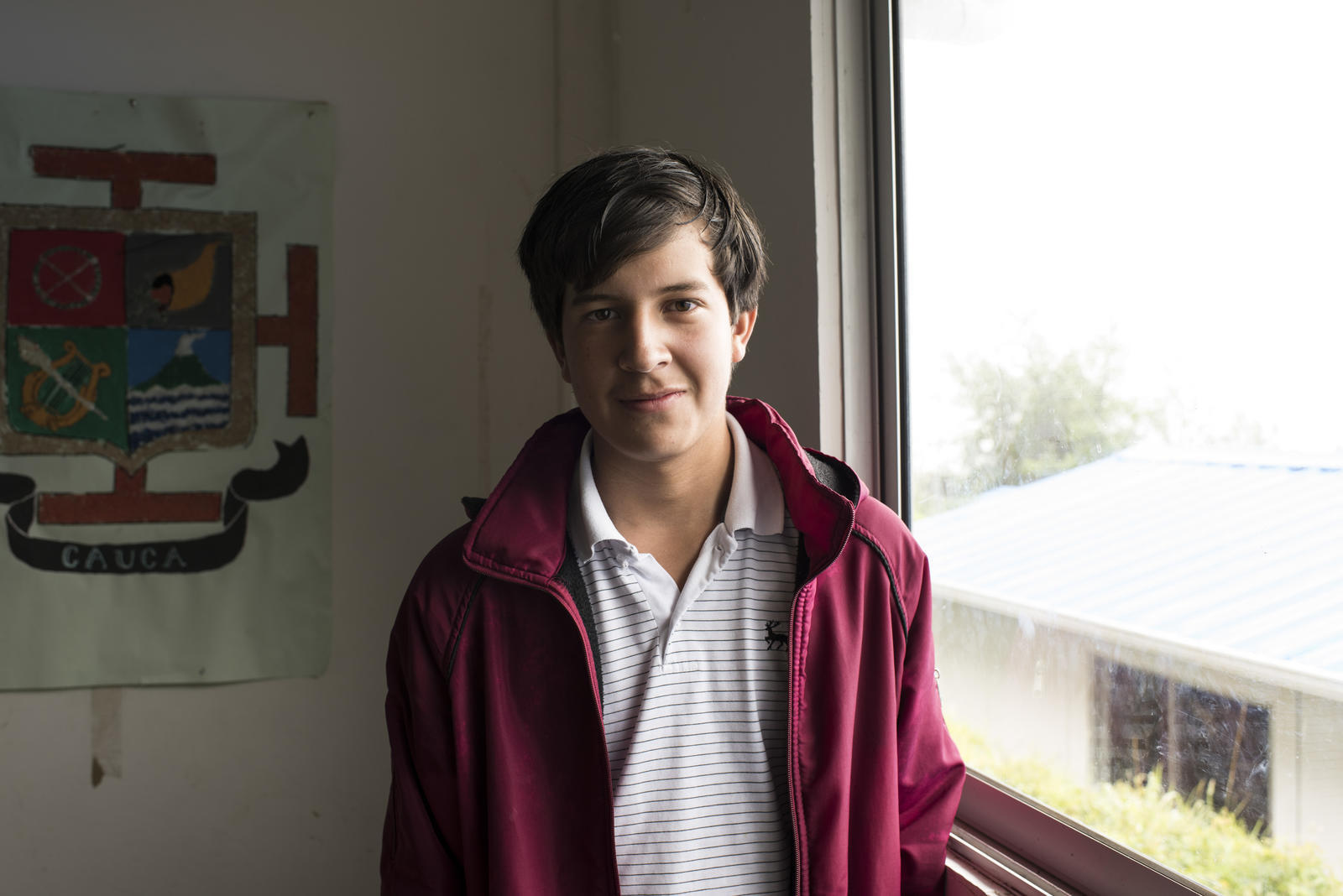
Oscar Fernando Hoyos Carvajal, 16 years old and 11th grade student. ©SDG Fund / Freya Morales
Oscar Fernando Hoyos (16 years old), a student from the Educational Institution of Nuestra Señora del Rosario, explains that one of the main problems in the region is the severe lack of water. “As a student I‘m very interested as the environment is quickly deteriorating and the water is very contaminated”. Many of the problems were made worse by the “incendio de Septiembre” of 2015. “A lot of the trees were lost and a much of the water sources were tainted. Which is why we came up with the idea to utilize 15,000 trees to better protect the various water sources”. With the support provided by the joint programme of the SDG Fund, and as part of the government’s Strategy for Early Recovery, the planting alone helped increase production in the nursery from 20,000 to 50,000 indigenous plants. The fauna included the planting of a number of specialized vegetation including as urapan (Chinese ash), guamo, el sauce (willow), guamo or alí.
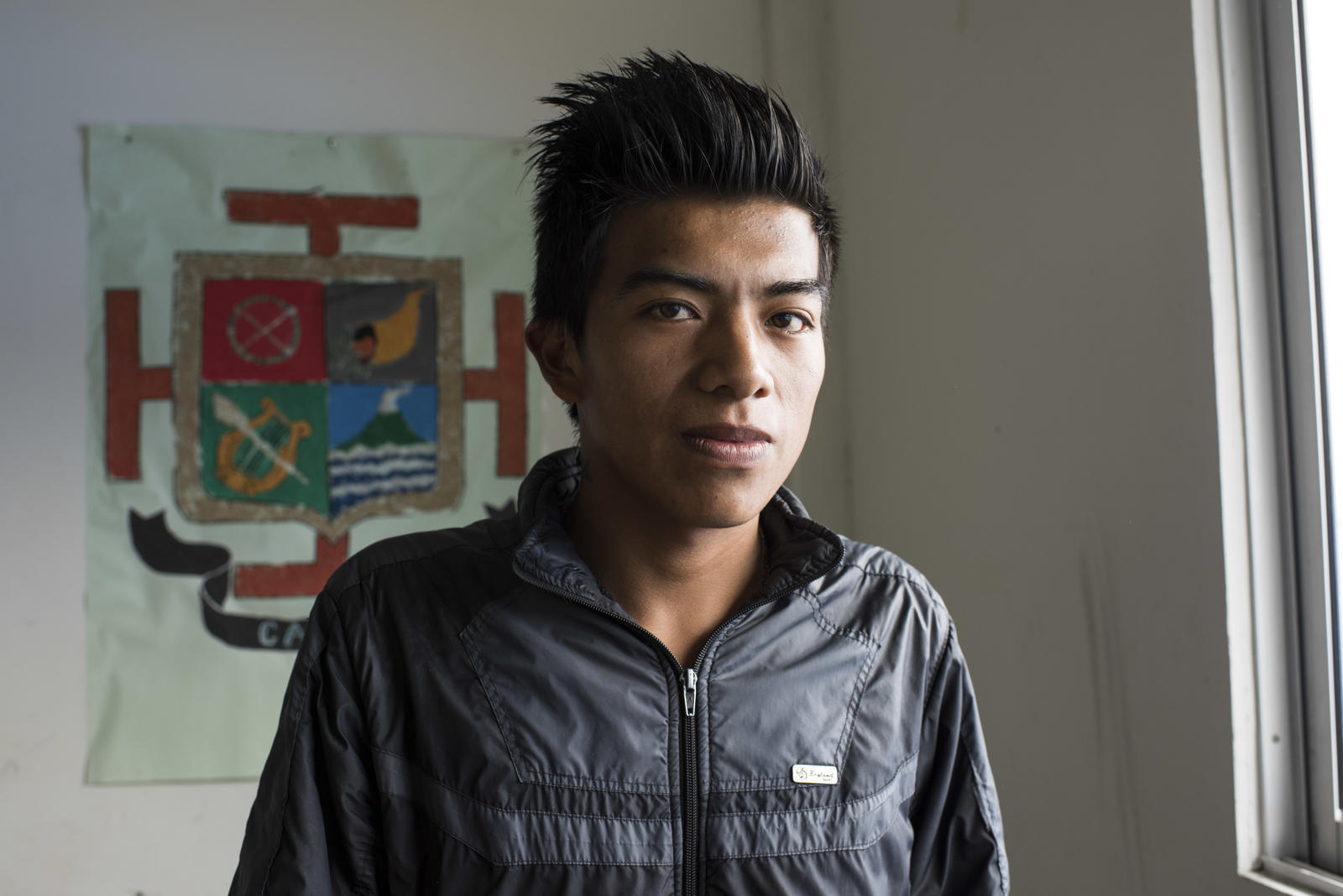
Yesid Alcibar Cordoba, 18 years old and 11th grade student. ©SDG Fund / Freya Morales
Yesid Alcibar Cordoba (18 years old) shared his happiness as he recollected his participation in the signing of the Pact of El Rosal and the day in which they opened the community aqueduct, also supported by the SDG Fund. As part of the Pact, the local government, students, professors, rural communities and organizations made a unique commitment to care and protect their environment, including micro basins and local forests. Yecid described the importance of the Pact, “If we are to enable more plants and stimulate growth then its critical that we protect our micro basins and improve their functioning- if we continue to work together to support and care for our limited supply of water we can also increase the diversity of plant species”.
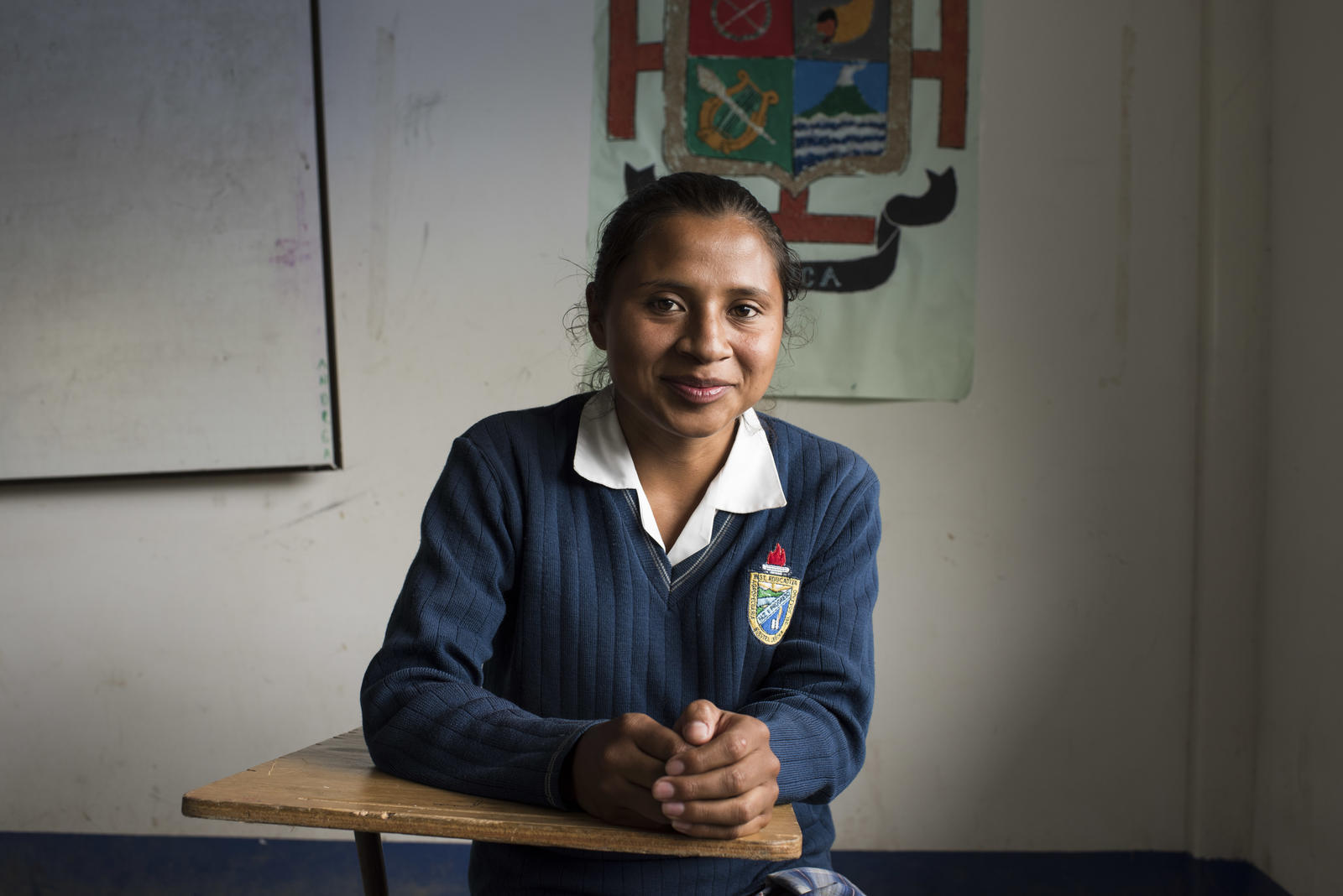
Martha Timana Imbachi, 23 years old and 11th grade student. ©SDG Fund / Freya Morales
Martha Timana Imbachi (23 years old), explained that thanks to this initiative, “a lot of people have learned and become aware of what could constitutes unsafe practices, such as the felling of trees, the improver conservation or misuse of water, or the excess use of fertilizers and indiscriminate cutting of trees. Thanks to the communities considerable reforestation efforts and efforts of the nursery, its been encouraging to see how people who suffered from the fire have received new trees for their land”.
Community Participation
Despite being one of the areas with the most natural resources in all of Colombia, el Cauca is also one of the areas most adversely affected by the country’s decades of armed conflict. For Homero Rengifo, the Secretary of the Government of San Sebastián, the initiative and activities spurred by the Educational Institution of Nuestra Señora del Rosario are key efforts to building peace in the region. “The fire has been used as an positive opportunity to create alternative community solutions and means of participation. The United Nations has supported the additional creation of plots of land which support the create additional resources for nutritional harvest and to raise awareness on the importance of participatory work in the community”.
After years of conflict, the reconstruction of the region’s economic and social pillars remains a challenge. But now a key objective is to support a joint program entitled, “Productive and food secure territories for a peaceful and resilient Cauca.” The project is implemented by the United Nations Development Program (UNDP), UN Women, the Food and Agriculture Organization of the United Nations (FAO) and the World Food Programme (WFP), and also supported by the Spanish Agency for International Development Cooperation (AECID). The population of San Sebastián is agrarian, the majority are of indigenous origins and 95% of their economy is based on traditional agricultural exploitation.
The moment for building peace
It is clear that now is the moment to rebuild, to plant the seeds of peace. Martha, Yecid and Óscar are amazing examples of how youth are actively supporting their communities in a meaningful way. The Sustainable Development Goals, have provided a call for action that is directed at Governments, civil societies, UN agencies and the private sector. A call that expresses the role that everyone can play in impacting their community- and in this case, supporting a key component of their livelihoods.
When Martha was asked about the SDGs, her message was clear. “We must take care of our planet and we must care for our environment, which is needed for our survival. If we continue in harming our environment, it will cease to exist and to provide any benefit. Talk is cheap, but if you want to help then plant a tree, take care of an aqueduct and local water sources, use organic fertilizers, take care of the environment, take care of indigenous species and stop the destruction of water sources”. Homero Rengifo’s strong message also resonates with Martha who suggested, “the solutions post conflict, have to reflect the long-term and work through generations if we are to live in peace and have a dignified live with our goals and aspirations intact. ”.
English translation by Raul Rios.

